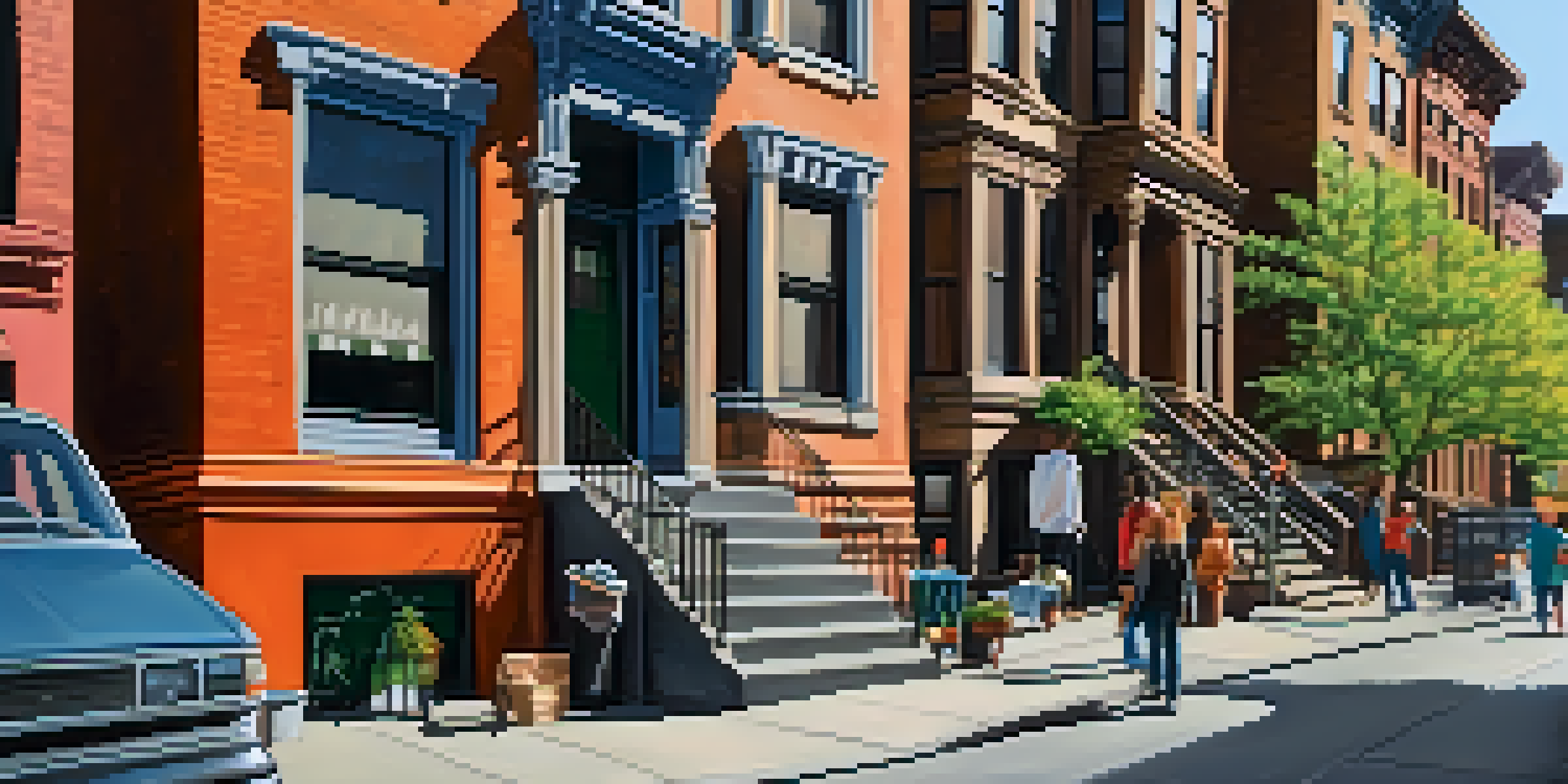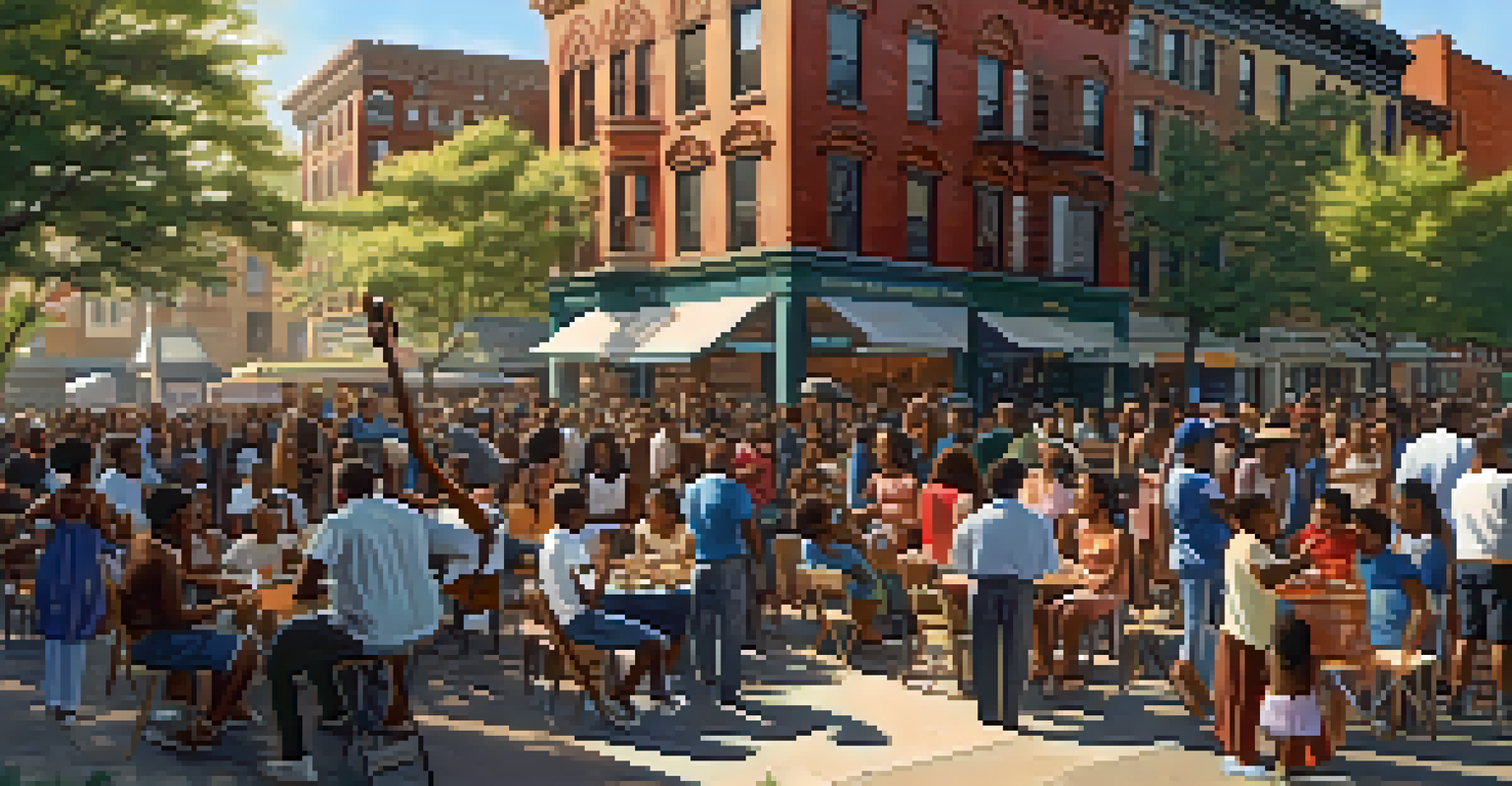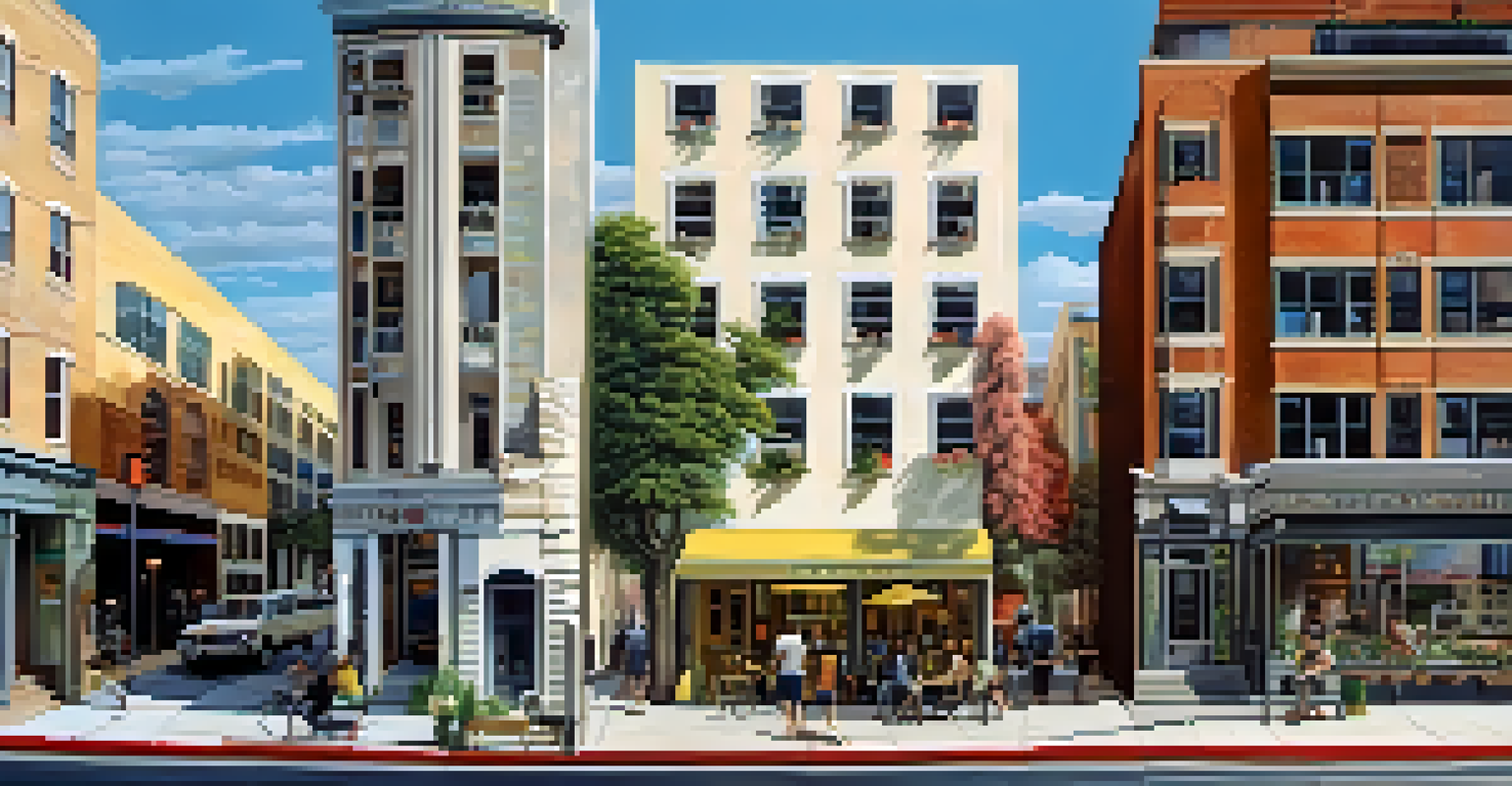Cultural Changes: Gentrification's Role in NYC Identity

Understanding Gentrification in NYC's Neighborhoods
Gentrification is a complex process that often alters the fabric of urban neighborhoods. In NYC, it typically involves wealthier individuals moving into a historically lower-income area, which can lead to rising property values and changes in the local culture. This transformation can be both exciting and challenging, as new businesses and amenities spring up, but long-time residents may feel displaced. Understanding gentrification is crucial to grasping how NYC evolves while grappling with its identity.
Gentrification is a complex process that often alters the fabric of urban neighborhoods.
For instance, the transformation of areas like Williamsburg in Brooklyn showcases how the influx of artists and young professionals has led to an explosion of new bars, restaurants, and galleries. Yet, this has also pushed out long-standing businesses and community members who can no longer afford the rising costs. This duality illustrates the bittersweet reality of gentrification, where progress can come at the expense of historical roots and cultural diversity.
Ultimately, gentrification reflects broader economic trends and shifts in society's values, raising questions about who gets to define a neighborhood's character. As we explore these changes, it becomes essential to consider the implications for community identity and social cohesion.
The Cultural Mosaic of New York City
New York City is often celebrated as a melting pot, with a rich tapestry of cultures and communities. This diversity has been shaped over decades, with immigrant populations contributing to the city’s unique identity. However, gentrification can disrupt this mosaic, as new residents may not always embrace the cultural heritage of existing communities. This clash can lead to tensions and a sense of loss among those who have called these neighborhoods home for generations.

Take Harlem, for example. Once a vibrant center of African American culture, Harlem has seen an influx of new residents and businesses that sometimes overlook its historical significance. While new developments can bring investment and revitalization, they may also dilute the cultural legacy that has defined the area for decades. The challenge lies in balancing growth with preservation, ensuring that the rich history of neighborhoods is honored.
Gentrification Alters NYC Neighborhoods
Gentrification brings wealthier residents into historically lower-income areas, resulting in rising property values and cultural changes that can displace long-time residents.
As we navigate this cultural landscape, it’s essential to recognize the value of all voices and experiences. Engaging with community members and fostering inclusive dialogues can help bridge the gap between old and new, creating a more harmonious urban environment.
Economic Forces Driving Gentrification
At its core, gentrification is driven by economic factors, including housing demand and investment opportunities. As cities grow, developers often seek out areas that show potential for profit, leading to renovations and new constructions. While this can stimulate local economies, it often results in rising rents and property taxes that can displace long-time residents. Understanding these economic forces is key to comprehending the challenges and opportunities that gentrification presents.
Public policy plays a significant role in the gentrification process, influencing everything from zoning laws to housing regulations.
For example, the Lower East Side has seen a transformation over the years, with luxury condos replacing older tenements. This shift reflects broader trends in urban development, where the demand for housing in vibrant areas often outstrips supply. As a result, the neighborhood has become less accessible to low-income families, altering the community's demographic and cultural landscape.
The interplay of economic interests highlights the need for thoughtful urban planning and policies that prioritize affordable housing. By addressing these concerns, cities can work towards creating environments where all residents can thrive, preserving the diversity that makes places like NYC so special.
Community Resistance and Resilience
Amid the challenges posed by gentrification, many communities have shown remarkable resilience and resistance. Grassroots organizations and local activists often emerge to advocate for the rights of long-time residents, pushing back against displacement and the loss of cultural identity. These efforts can take many forms, from organizing rent strikes to creating community land trusts that prioritize affordable housing for future generations.
A notable example is the fight against the Atlantic Yards project in Brooklyn, where residents banded together to challenge the development’s impact on their community. Their activism highlighted the importance of community voice in urban planning processes, proving that residents can influence decisions that affect their lives. This resilience underscores the strength of community bonds and the power of collective action.
Cultural Heritage Faces Challenges
As neighborhoods gentrify, there is often a clash between new developments and the cultural heritage of existing communities, leading to tensions and a sense of loss.
As urban landscapes continue to evolve, the stories of resistance remind us that neighborhoods are not just physical spaces; they are living entities shaped by the people who inhabit them. Supporting community-led initiatives can foster a sense of belonging and ensure that the cultural heritage of neighborhoods is preserved.
The Role of Policy in Shaping Gentrification
Public policy plays a significant role in the gentrification process, influencing everything from zoning laws to housing regulations. Policymakers often face the dilemma of fostering economic growth while also protecting vulnerable communities from displacement. Effective policies can promote affordable housing, support local businesses, and ensure that new developments benefit existing residents rather than pushing them out.
For instance, inclusionary zoning policies require developers to set aside a portion of new units for affordable housing. Such measures can help maintain diversity within neighborhoods, allowing long-time residents to remain in their homes amidst rising rents. However, the effectiveness of these policies often depends on political will and community engagement, highlighting the need for local voices to inform decision-making.
In navigating these complexities, it’s crucial for policymakers to adopt an equitable approach that considers the needs and interests of all community members. By prioritizing inclusive development strategies, cities can work towards a future where gentrification does not equate to displacement.
Preserving Cultural Heritage Amid Change
As neighborhoods undergo transformations, finding ways to preserve cultural heritage becomes increasingly important. This can involve protecting historic buildings, supporting local artists, and promoting cultural events that celebrate the community's identity. By valuing the history and contributions of long-standing residents, cities can create a more inclusive narrative that honors the past while embracing the future.
For example, initiatives like the Harlem Cultural Festival celebrate the rich history of the neighborhood while attracting visitors and new residents alike. Events such as these not only honor cultural legacies but also foster connections between diverse groups, bridging the gap between old and new. This type of community engagement is vital in ensuring that everyone feels a sense of belonging.
Community Resistance is Vital
Grassroots organizations and local activists play a crucial role in advocating for the rights of long-time residents and preserving neighborhood identity amidst gentrification.
Preserving cultural heritage requires a collaborative approach, involving local residents, artists, and policymakers alike. By working together, communities can strike a balance that respects their history while adapting to the inevitable changes that come with urban development.
Looking Ahead: Future of NYC's Identity
As gentrification continues to shape NYC, the question remains: what will the city's identity look like in the future? With ongoing changes in demographics, economic conditions, and cultural influences, NYC stands at a crossroads. The challenge lies in fostering an environment where growth does not come at the expense of the rich diversity that has defined the city for generations.
Future developments should prioritize inclusivity, ensuring that all community members have a voice in shaping their neighborhoods. By promoting affordable housing, supporting local businesses, and investing in community-led initiatives, NYC can work towards a more equitable future. This vision requires collaboration among residents, businesses, and policymakers to create a city that reflects the values of its inhabitants.

Ultimately, the story of NYC is one of resilience and adaptation. By learning from the past and embracing a vision that honors its diverse roots, the city can continue to thrive as a dynamic and inclusive urban landscape.